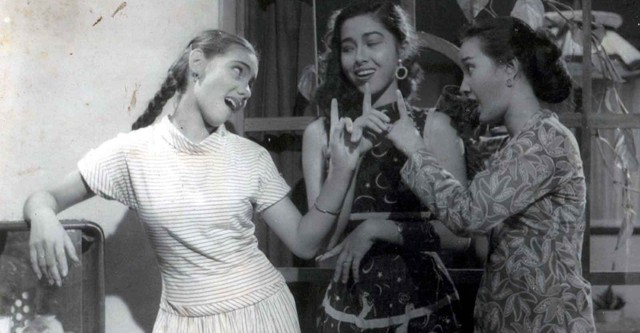jaundiceinnewborns.net – “Tiga Dara” is a beloved Indonesian film released in 1956, directed by Usmar Ismail, often regarded as one of the pioneers of Indonesian cinema. This classic musical comedy has left an indelible mark on the country’s film industry, celebrated for its charming narrative and memorable musical numbers.
Plot Summary
The film centers around three sisters—Nunung, Nana, and Nenny—who live with their father and grandmother. The story unfolds as their grandmother becomes increasingly concerned about the eldest sister, Nunung, remaining unmarried. Determined to see her granddaughters married, she sets out to find suitable husbands for them. The film humorously explores the romantic escapades and mishaps that ensue as each sister navigates love and family expectations.
Themes and Characters
“Tiga Dara” beautifully captures the essence of family dynamics and societal expectations of women during the 1950s. Through the lives of the three sisters, the film explores themes of love, marriage, and the pursuit of personal happiness. Nunung, the eldest sister, represents the pressure to conform to traditional roles, while her sisters, Nana and Nenny, add layers of humor and youthful rebellion to the narrative.
Cinematic Elements
Usmar Ismail, known for his storytelling prowess, infuses “Tiga Dara” with a blend of comedy and musical elements. The film features catchy songs that have become timeless classics, reflecting the vibrant culture of Indonesia. Its lighthearted tone is complemented by lively performances and engaging dialogues, making it a delightful watch for audiences of all ages.
Reception and Legacy
Upon its release, “Tiga Dara” was met with critical acclaim and commercial success, solidifying its place in Indonesian cinema history. The film’s popularity endures, with its themes and characters resonating across generations. In 2016, a digitally restored version was released, introducing “Tiga Dara” to a new audience and reaffirming its status as a cultural treasure.
Conclusion
“Tiga Dara” remains a cherished classic that continues to captivate audiences with its timeless story and musical charm. Its portrayal of familial bonds and the societal expectations of women offers valuable insights into the cultural landscape of 1950s Indonesia. As a cornerstone of Indonesian film history, “Tiga Dara” stands as a testament to the enduring appeal of well-crafted storytelling and the universal themes of love and family.
